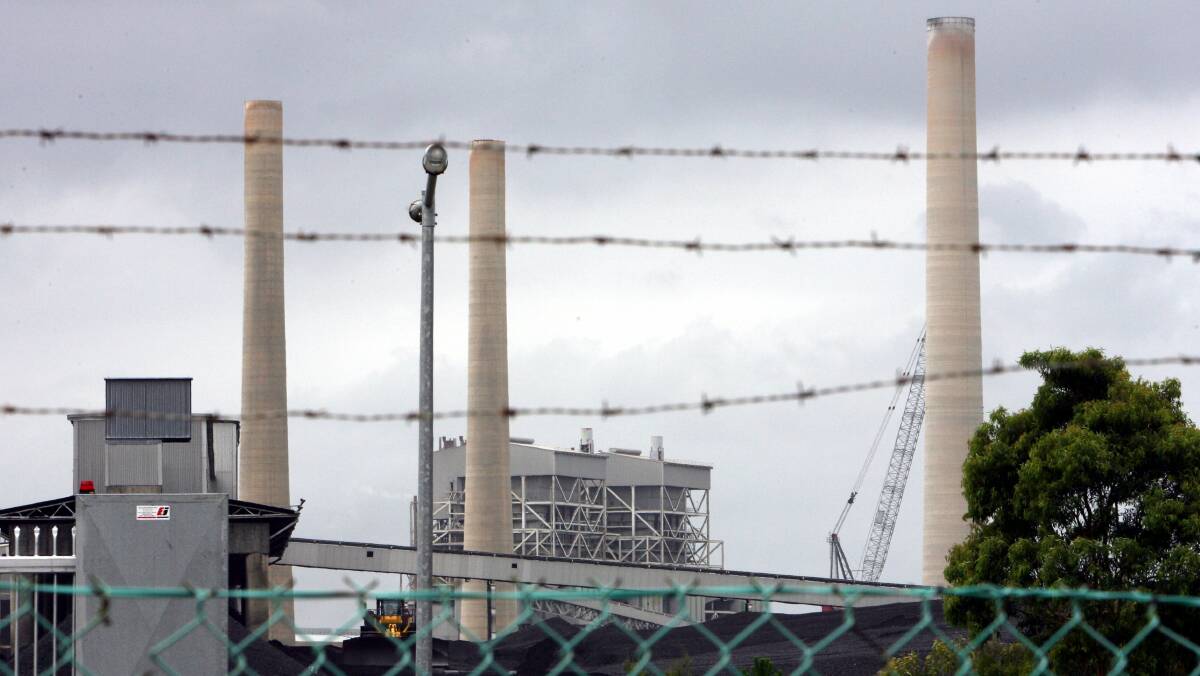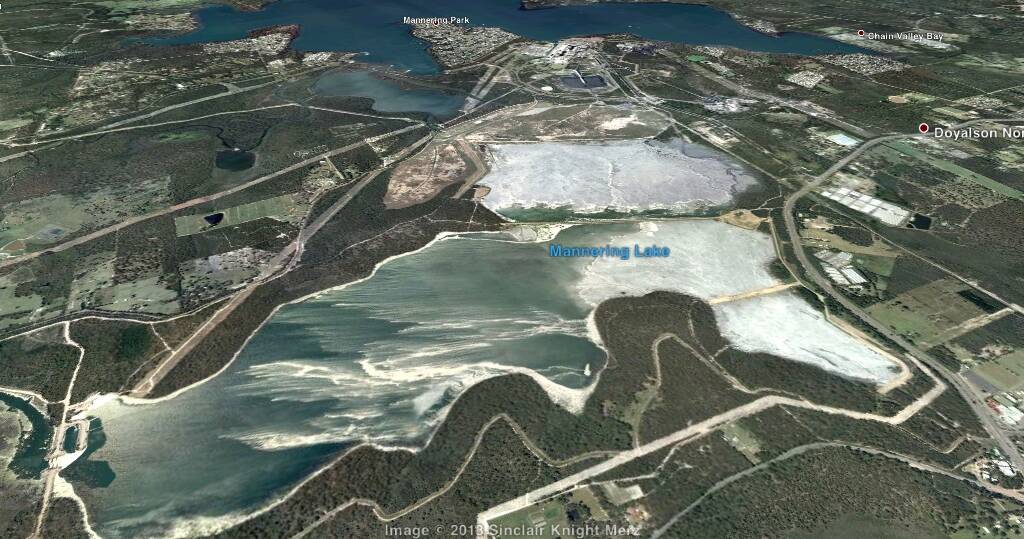
THE state’s environmental watchdog has been slammed after suspected asbestos waste and a “large stockpile” of demolition waste was found across a 30,000 square metre area at the Vales Point power station ash dam.
Subscribe now for unlimited access.
or signup to continue reading
The NSW Environment Protection Authority placed a clean-up notice issued to Delta Electricity in October on its public register, but failed to notify local communities despite nearby residents repeatedly raising serious concerns about long-term impacts of the 400-hectare ash dam area.
Mannering Park Progress Association spokesperson Sue Wynn said Delta did not raise the pollution incident at late 2018 meetings with community groups, and both the company and the EPA had failed nearby residents.
“We hear so much about Australians losing trust with governments and institutions and here’s an example why. People who live near it have a right to know. Why not be honest and straight with the community, because when you keep it quiet people get suspicious about what else they’re not being told,” Ms Wynn said.
People who live near it have a right to know. Why not be honest and straight with the community, because when you keep it quiet people get suspicious about what else they’re not being told.
- Mannering Park Progress Association spokesperson Sue Wynn
“People just think why should I trust them when they’re not doing the right thing by us.”
The EPA was unaware of the pollution incident until Delta reported suspected building and demolition waste at the ash dam on September 26 in a rehabilitation area managed by a contractor. The power station is licensed to accept only clean fill from the NorthConnex road project at the southern end of the M1 Motorway, for use as capping material in a restricted part of the ash dam rehabilitation site.

The suspected asbestos and domestic waste was found in a much larger area known as pond 4.
The EPA charged Delta a $550 administration fee for issuing the clean-up notice and gave the company deadlines to comply with orders including engaging a suitable expert consultant to carry out a risk assessment and testing for asbestos, general and restricted waste, hazardous waste, acid sulphate soils and toxic fire fighting foam contaminants (PFAS).
But Environmental Justice Australia spokesperson Dr James Whelan strongly criticised the EPA’s response after Delta labelled concerns raised in August by Dr Whelan about the ash dam’s impacts on nearby residents and the environment as “mischievous”.
Dr Whelan said he was disturbed to find the clean-up notice on the EPA’s public register in late December while preparing a submission as the EPA considers new licences for NSW power stations Vales Point, Eraring and Mt Piper.
“If you or I put a sheet of asbestos out the front of our homes the EPA would come down on us like a ton of bricks, but when it’s asbestos found over a huge area at a coal-fired power station then it’s a $550 admin fee and bury the clean-up notice where few people look,” Dr Whelan said.
“Whatever happens on that ash dam is out of sight, out of mind because you or I can’t set foot beyond the gates. If the company hadn’t reported it then it wouldn’t have been picked up by the EPA. We need to have confidence in the environmental regulator but transparency is in order. There’s no transparency here. The community doesn’t know if the asbestos is still there, if it’s been removed, and if it has been removed, where to?”
The October clean-up notice and subsequent notices to Delta and contractor Howard Recycling of Mannering Park ordered both companies to cease causing or permitting the transportation of waste other than NorthConnex virgin excavated natural materials (VENM) to the ash dam area.
The notice said a compliance inspection by EPA officers on September 27 “identified multiple pieces of suspected asbestos waste and a large stockpile of suspected general solid waste”.
The suspected asbestos waste was found at the active tipping area in the capped cell known as pond 4 and “also an approximate 500m long by 60m wide area of spread and leveled material at the east to south east of pond 4”.
The material included suspected asbestos sheeting, cladding and piping.
“The EPA is of the opinion, based on evidence obtained to date which includes the suspected identification of asbestos waste, that a pollution incident is occurring at the premises,” the EPA told Delta in October.
“The presence of asbestos waste and other potential contaminants is likely to cause degradation of the land resulting in potential human and environmental health risks. Uncontrolled asbestos waste has the potential to cause air pollution. The EPA is therefore of the opinion that action is required to address the pollution incident described above to prevent impacts to human and environmental health,” the clean-up notice said.
The EPA is of the opinion, based on evidence obtained to date which includes the suspected identification of asbestos waste, that a pollution incident is occurring at the premises.
- EPA to Delta Electricity in clean-up notice.
Fly ash is one of the combustion products generated from coal-fired power stations. It is composed of fine particles that are driven out of the boiler with the flue gases.
In August Vales Point described ash as “inert” in response to EJA reference to research alleging coal ash contained a “toxic stew” of chemicals including chromium, lead, arsenic and mercury.
Vales Point power station’s ash is pumped as a slurry to the purpose-built ash dam. The slurry is capped by about 30cm of fill from NorthConnex.
The illegal dumping of asbestos can lead to penalties of up to $5 million.
An EPA spokesperson said the regulator was actively investigating the matter.
The clean-up notice required the company to assess and report on the amount of asbestos at the site.
“Once this report is completed, the EPA will determine if further action needs to be taken,” the spokesperson said.
Delta was contacted for comment.

